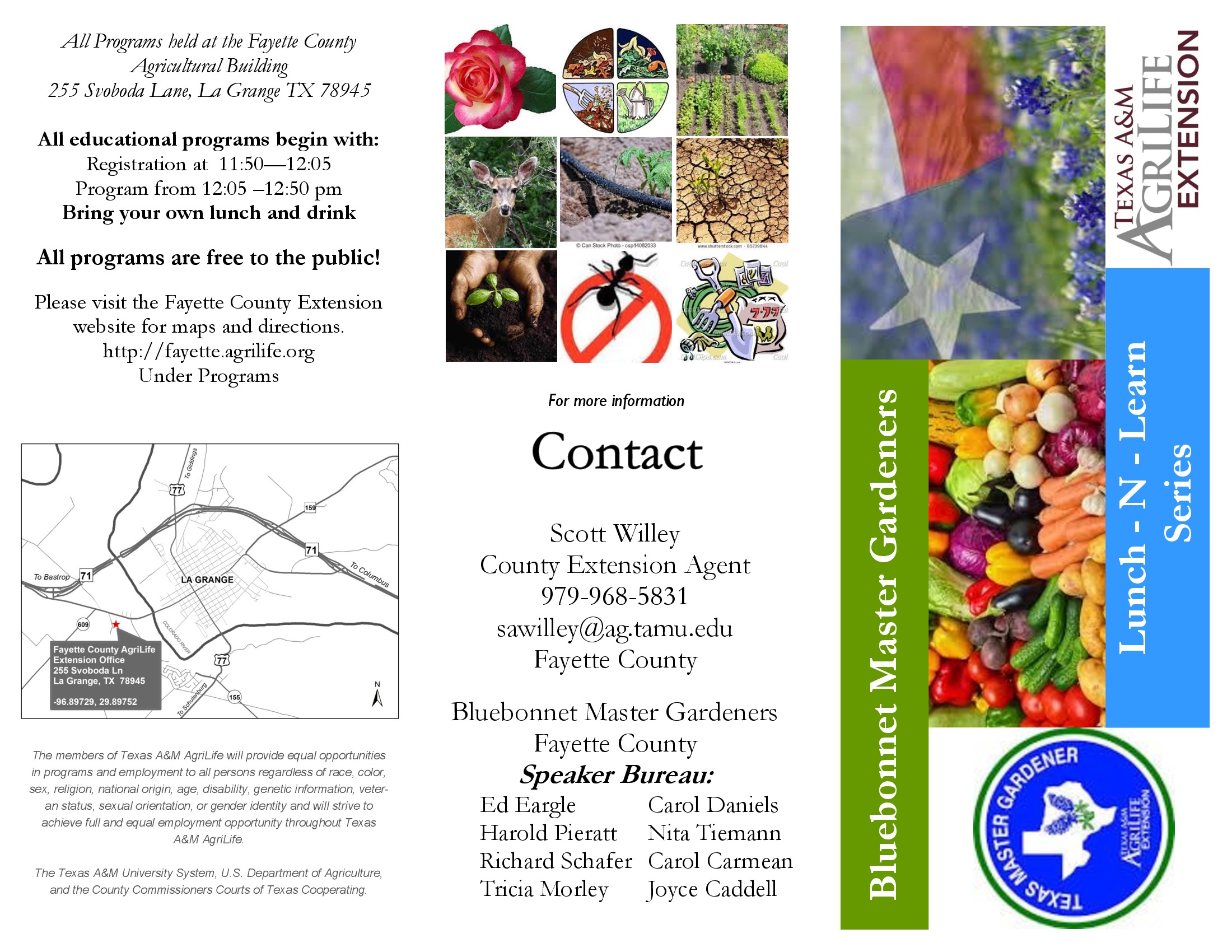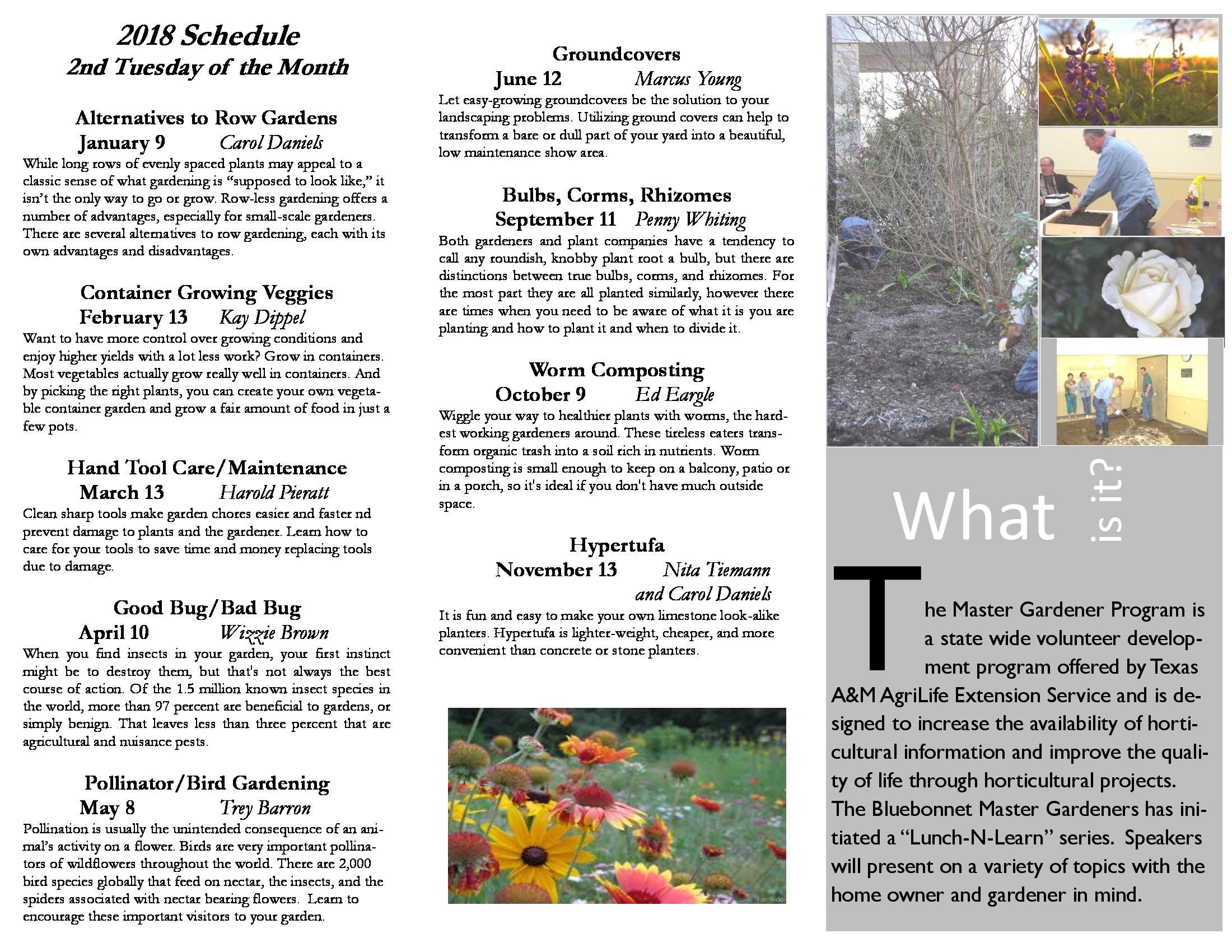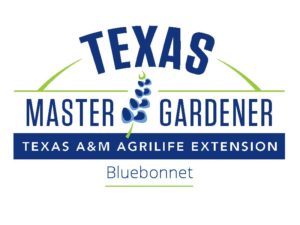
Board Meeting: 8:30 a.m – 10:00 a.m.
Social: 10:00 a.m. – 10:30 a.m.
Program: 10:30 a.m.– 12:00 noon
Presentation: Wizzie Brown – Entomology (Via Zoom)
Texas A&M Senior Extension Program Specialist – IPM
Wednesday, March 16, 2022 from 11 am-11:45.
Ashley Morgan-Olvera is inviting you to Invasive Jumping & Hammerhead Worm Workshop
Join Zoom Meeting
https://shsu.zoom.us/j/88233787256
Meeting ID: 882 3378 7256
Passcode: WORMS
One tap mobile
+13462487799,,88233787256# US (Houston)
+12532158782,,88233787256# US (Tacoma)
Dial by your location
+1 346 248 7799 US (Houston)
+1 253 215 8782 US (Tacoma)
+1 669 900 9128 US (San Jose)
+1 312 626 6799 US (Chicago)
+1 646 558 8656 US (New York)
+1 301 715 8592 US (Washington DC)
Meeting ID: 882 3378 7256
Find your local number: https://shsu.zoom.us/u/kCmtZtQNt
The Fort Bend Regional Vegetable Conference is a celebration of vegetable production along the upper Gulf Coast region. Counties of Waller, Wharton, Harris, Galveston, Brazoria, Colorado, and Austin join with Fort Bend to put on this event focusing on teaching sustainable practices to help producers maximize efficiencies and profitability. Although we were not able to host our annual Vegetable Conference in February, we have put together a short virtual summer session with topics centered around sustainable and organic production, disease and insect management, and variety selection. Partnering sponsors have allowed us to offer this program at a great price. The cost to attend is $10. We will offer three (3) continuing education credits in the General category for Texas Department of Agriculture Pesticide Applicator license holders.
Come join us virtually at the Fort Bend Regional Vegetable Conference – Summer Session on Thursday, July 29, 2021. The conference will begin at 9:00 am and end at 12:00 pm.
To register, please go to https://tinyurl.com/t86xftbh. There will be no in office registrations. For general questions, please contact Brandy Rader at 281-633-7029.
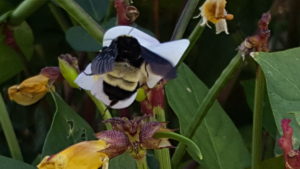 Insects and pests are some of the most diffcult challenges home gardeners and homeowners try to manage. To address these issues, Texas A&M AgriLife Extension Service specialists in entomology and integrated pest managemnt (IPM) have team-up to present two podcasts: “Bugs by the Yard” and “Unwanted Guests”. Both are free and open to the public to listen and learn from these specialists.
Insects and pests are some of the most diffcult challenges home gardeners and homeowners try to manage. To address these issues, Texas A&M AgriLife Extension Service specialists in entomology and integrated pest managemnt (IPM) have team-up to present two podcasts: “Bugs by the Yard” and “Unwanted Guests”. Both are free and open to the public to listen and learn from these specialists.
Bugs in the Yard: A weekly podcast focused on garden pests and bugs.
Hosts: Texas A&M AgriLife Exention
Dr. Erfan Vafaie (IPM Specialist)
Molly Keck (entomologist, Bexar County)
Wizzie Brown (entomolgoist, Travis County)
Listen: Link to Listen to Bugs by the Yard Podcasts
Unwanted Guests: This podcast covers insects and pests we don’t want in the house.
Hosts: Texas A&M AgriLife Exention
Robert Puckett, Ph.D. (entomolgist, Bryan-College Station)
Jane Hurley (IPM Specialist, Dallas)
Molly Keck (entomologist, Bexar County)
Wizzie Brown (entomolgoist, Travis County)
Listen: Availalbe on podcast platforms like iTunes and Audible.
by bluebonnet
Ask an Expert is now Ask Extension. This service offers one-to-one expert answers from Cooperative Extension/University staff and volunteers within participating Land-Grant institutions from across the United States. Before posting a new question, you may also search previously answered questions in the Knowledgebase catalogue.
DO YOU HAVE A QUESTION FOR EXTENSION EXPERTS?
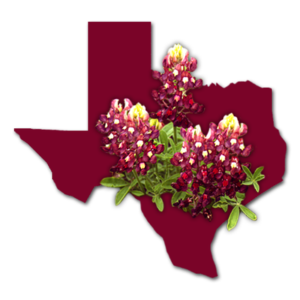 So many online horticulture learning opportunities you don’t know where to start? This guide can get you started learning from horticulture experts.
So many online horticulture learning opportunities you don’t know where to start? This guide can get you started learning from horticulture experts.
Texas A&M AgriLife Extension recorded many of their programs for viewing on your own schedule. These recorded presentations are free to the public.
Bluebonnet Master Gardener Association members may claim Continuing Education Units (CEU) for these all AgriLife programs that pertain to gardening and horticulture; live or recorded. Just watch the presentation and record your time as CEU. BMGA members, remember to get your CEU credits recorded by December 31, 2020 to apply those hours to your re-certification requirement. For 2020, you need 6 CEU credits.
Below are links to some of these programs to start learning from our Aggie experts.
Gulf Coast Gardening Online Series
There are 22 videos for more than 24 hours of learning. Topics include:
Young Tree Care – Video #5
Earth Kind Pest Disease & Weed Control – Video #10
Texas Superstar Plants – Video #19
Horticulture & Gardening Webinar Series with David Rodriguez, County Extension Horticulture Agent, Bexar County
There are currently 17 of these recorded sessions for more than 13 hours of education. Topics include:
Getting Your Lawn and Landscape Ready for Summer Heat – Video #9
Tomato Basics 101 – Video #13
Butterfly Gardening – Nectar Plants – Video #5
Aggie Horticulture Facebook Live Recordings
There are 55 horticulture recorded events. Wow! You do not need a Facebook account to watch. Topics include:
Homeowner Greenhouses- Video #41
Transitioning to a Fall Garden, Two Parts – Video #40 & #45
Toys for Vegetable Gardening – Video #50
Fall Blooming Flowers & Biennials Planted in Fall – Video #51
Growing Blueberries in Containers – Video 18
 If you missed Wizzie Brown’s Backyard Bug Hunt webinars, below are links to recorded series to date.
If you missed Wizzie Brown’s Backyard Bug Hunt webinars, below are links to recorded series to date.
Ms. Brown is an Integrated Pest Management Program Specialist in Travis County. She earned a Bachelor of Science degree in Entomology from the The Ohio State University in 1996 and her Masters in Entomology at Texas A&M University in 1999.
When you find insects in your garden, your first instinct might be to destroy them, but that’s not always the best action. Of the 1.5 million known insect species in the world, more than 97% are beneficial to gardens, or simply benign. That leaves less than 3% that are agricultural and nuisance pests.
Bluebonnet Master Gardeners may claim CEU credit for these live or recorded events.
You may watch these webinars on the Travis County AgriLife Extension site or click the topics below:
Butterfly & caterpillar ID (Nymphalids & Papilionids)
Attracting insects to your yard
Fly identification & management
Texas Master Gardeners are inviited to join the online Virginia Cooperative Extension Master Gardener College June 25-28, 2020. This is really a neat opportunity to learn from another state’s Master Gardener program. Although not all of the information pertains to Texas gardeners, much will. Please take this opportunity for more innovated learning.
BMGA CEU credit.
BMGA Interns Only: Apply time to their volunteer hours.
Register by June 19, 2020:
Mole and gopher control is a frequent topic in our area. These animals are not only a nuisance, but they can also be destructive to lawns and gardens. When their tunnels collapse in my yard, they leave holes in the lawn making what I call “ankle-twisters,” so named from experience. Pocket gophers also pushed piles of sand up into our well house.
Bluebonnet Master Gardener Association member B.R. Koehler gave his presentation on Mole and Gopher Control to the Waller County Master Gardener Association on February. 22, 2020 at the Waller County AgriLife Extension Office in Hempstead. B.R.’s wife, Master Gardener Charlene Koehler, gave her usual assistance with the program.
The program was considered supplemental training for the Waller County Master Gardener Training class of five. The session was open to guests from the community for a total attendance of 35. B.R.’s program includes circulating his “mole & gopher coffins” around the room with preserved samples of a mole and a gopher. He does this so everyone can learn to identify them and see the difference between them.
According to Texas A&M AgriLife Extension, pocket gophers are burrowing rodents which live almost entirely underground. Gophers are well adapted to their underground existence, with stout forelegs and strong curved claws for digging. They have prominent, yellow incisor teeth and large, fur-lined external cheek pouches in which food is carried. The pocket gopher’s diet mainly consists of fleshy roots of various plants, including trees. Gophers normally eat tubers such as potatoes and peanuts. They also eat green tops and seeds that can be pulled down into their burrows.
Moles are small, burrowing mammals that feed on insects. Moles have furless, pointed snouts, small eyes concealed in the fur, and no external ears. They have broadened, shovel-like front feet, webbed to the base of the claws, that enable them to dig effectively for insects. Moles have a keen sense of smell and touch but are almost blind. Moles destroy only a few plants or bulbs by direct feeding. The main damage is done when plant roots are dislodged as the animals tunnel through the soil in search of insects. Their burrowing can disfigure lawns and parks, destroy flower beds, tear up the roots of grasses and create havoc in small garden plots.
For more information about controlling moles and gophers, review material provided by Texas A&M or attend one of B.R. presentations in the future.
by bluebonnet
The 2019 Earth-Kind Landscape Short Course by Texas A&M AgriLife Extension Horticulture Sciences Program is a continuing education program designed for professionals responsible for managing and maintaining urban green space such as residential landscapes, parks, commercial properties and golf courses.
The course will also benefit municipal, schools, city personnel and landscape businesses, particularly those interested in developing sustainable urban landscape conservation programs.
Texas Master Gardeners earn CEUs for this course.
When:
December 16 – 18, 2019
Where:
Texas A&M HortTREC
3199 CR 269 E.
Somerville, TX 77879
Speakers:
by bluebonnet
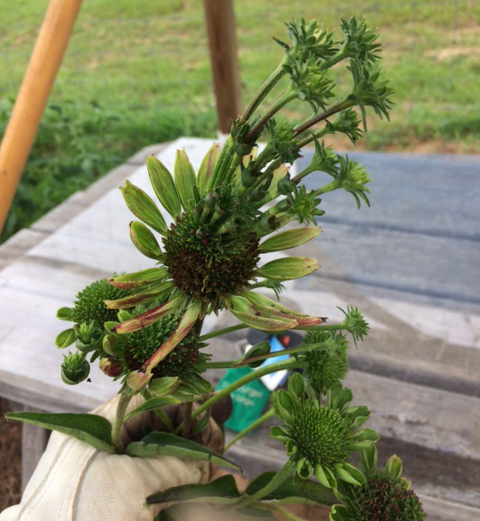
The coneflower oddities pictured came from Sens Center Vegetable Demonstration Garden that the Bluebonnet Master Gardener Association manages in Bellville, Texas in June 2019. Our research shows that these plants are infected with Aster Yellows disease caused by phytoplasma. However interesting the effect, Aster Yellows is a serious garden disease impacting more than 300 plants species in 38 plant families.
The Texas Plant Disease Handbook lists the following as the most important impacted plants of Aster Yellows disease:
Crops: broccoli, buckwheat, cabbage, carrot, cauliflower, celery, endive, flax, lettuce, onion, parsley, potato, parsnip, pumpkin, red clover, salsify, spinach, strawberry and tomato.
Flowers: aster, anemone, calendula, Centaurea, China aster, chrysanthemum, Clarkia, cockscomb, Coreopsis, cosmos, delphinium, daisies, Gaillardia, hydrangea, marigold, Nemesia, Paris daisy, periwinkle, petunia, phylox, Scabiosa, snapdragon, statice, strawflower, veronica, and zinnia.
Weeds: cinquefoil, daisy fleabane, dandelion, horseweed, plantain, ragweed, thistle, wild carrot, and wild lettuce.
Yellows diseases are caused by phytoplasma. All known forms of these small, specialized bacteria cause plant disease. Phytoplasmas are naturally spread from plant to plant by sucking insects, particularly leafhoppers. The insects pick-up phytoplasma during their feeding on infected host plants, then spread the disease when they move to feed on other plants. The phytoplasma can overwinter in leafhoppers and on perennial host plants and will re-emerge in the Spring.
Phytoplasmas commonly cause distorted, dwarfed, and yellowish leaves and shoots often referred to as “yellows”. Other symptoms include abnormal flower and leaf development, shortened internodes, and shoot proliferation (known as “witches’ broom”). The flowers of infected plants sometimes develop green, leaflike structures as seen the coneflower photo from the Sens Center Demonstration Garden.
Aster Yellows wreaks havoc on all parts of the plant. There are no chemical or organic treatments known to cure, suppress or kill the disease so once plants become infected, they remain infected and are a host plant for further infection throught the garden. Failing to destroy the infected plant means it survives as a constant source of phytoplasma to be spread to other plants. Garden sanitation is key to managing the disease. Once the disease is discovered, all parts of the plant including the root system must be removed and destroyed. Although heat may kill the pathogen, it is best not compost diseased plants. As with all phytoplasmas, the Aster Yellows pathogen cannot survive outside of the plant so the bacteria will not remain in the soil.
An integrated pest and disease management approach including destroying infected plants immediately upon discovery of the disease, maintaining proper garden sanitation practices and attempts to control the leafhoppers is recommended. If you believe you have plants of any kind infected with Aster Yellows or a similar disease, contact the Texas Plant Disease Diagnostic Lab for information about diagnostic testing and recommendations for minimizing the spread of disease in your garden.
Web sources used for this post include: Texas Plant Disease Handbook, Texas Plant Disease Diagnosic Lab, Missouri Botanical Gardens, Ohio State Cornflower Clean-up, Wisconsin Horticulture Division of the University of Wisconsin – Madison.
by bluebonnet
Our 2020 Master Gardener Certification Training Class is scheduled each Thursday from January 16th – April 23rd with the final graduation class on Tuesday, April 28, 2020. Participants from Austin, Colorado, Fayette & Washington Counties are welcome. The 64 hours of classes will be held at the Washington County Extension Sales Facility at 1305 East Bell Road, Brenham, Texas 77833 (use the Independence Rd entrance) , plus some field trips to be announced in class. The updated training manual compiled by the Texas Master Gardener Association, is included in the $175 registration fee. You may register online below or contact the Washington County Extension office at (979) 277-6262 for more information.
by bluebonnet
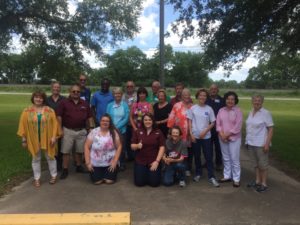 BMGA members Faye Beery and Carolyn Woodruff completed the two-day First Detector Training June 11-12, 2018 in Angleton. The Master Gardener Specialist First Detector-Plant Disease training course introduces participants to the National Plant Diagnostic Network’s effort to protect US agriculture and plants through awareness information of invasive, non-native pests and pathogens. Trainees learn basic plant disease diagnostic skills and symptom documentation skills. The ultimate goal of the training is to provide these trainees, all of whom are already certified Texas Master Gardeners, with expertise to assist Texas A&M AgriLife Extension Service with early detection of invasive and exotic pathogens & pests. This year’s class was sponsored by the Texas Plant Disease Diagnostic Laboratory, the Brazoria County Master Gardener Association and Texas A&M AgriLife Extension Service of Brazoria County.
BMGA members Faye Beery and Carolyn Woodruff completed the two-day First Detector Training June 11-12, 2018 in Angleton. The Master Gardener Specialist First Detector-Plant Disease training course introduces participants to the National Plant Diagnostic Network’s effort to protect US agriculture and plants through awareness information of invasive, non-native pests and pathogens. Trainees learn basic plant disease diagnostic skills and symptom documentation skills. The ultimate goal of the training is to provide these trainees, all of whom are already certified Texas Master Gardeners, with expertise to assist Texas A&M AgriLife Extension Service with early detection of invasive and exotic pathogens & pests. This year’s class was sponsored by the Texas Plant Disease Diagnostic Laboratory, the Brazoria County Master Gardener Association and Texas A&M AgriLife Extension Service of Brazoria County.
While the classroom part of their training is complete, to obtain the First Detector Specialist designation recognized by the Texas Master Gardener Association, Ms. Beery and Ms. Woodruff must complete 20 hours of field work assessing citrus and palm plants for pathogens. If you have citrus or palm in your gardens, be sure to contact Ms. Berry or Ms. Woodruff to conduct an assessment of your plants for invasive, non-native pests and pathogens. Their completed assessments and information forms will be submitted to the Plant Disease Clinic for Dr. Kevin Ong’s approval. Additionally, Ms. Beery and Ms. Woodruff are equipment with photos and other information to use educating the public through presentations to interested groups, clubs and societies.
by bluebonnet
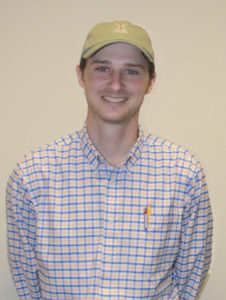
As a four-county Texas Master Gardener Chapter, BMGA is lucky to benefit from not one, but four Texas A&M AgriLife Agricultural Extension Agent advisers, one from each BMGA county. That means BMGA can tap into the knowledge, training, experience, passion of all four professionals. One of those agents is Stephen Janak, the Texas A&M AgriLife Agricultural Extension Agent for Colorado County.
Stephen Janak (pronounced “Yahn-ahk” but he will answer to anything close), grew-up in Victoria County, Texas on the family’s 22 acres where he gardened with his family. He participated in 4-H and was steeped in the importance of agriculture and horticultural at a young age, assisting his Extension Agent father in establishing, harvesting, and evaluating research test plots and result demonstrations, gardening, raising hay and many other agricultural projects.
Today, Mr. Janak works with the local 4-H youth program and emphasizes the importance using fact-based knowledge in agricultural and horticultural practices. He has trained youth in plant identification and is also skilled in agricultural pest identification, while still studying to hone his skills. He graduated from Texas A&M University in 2013 with a degree is Renewable Natural Resources. He studied under Dr. Barron Rector at Texas A&M and joined ArgiLife in 2014. Mr. Janak says his current read is Bill Adams’ The Texas Tomato Lover’s Handbook and he encourages everyone to read Aldo Leopold’s A Sand County Almanac, which is Mr. Janak’s “favorite book of all time”.
Mr. Janak is a BMGA Fruit Tree Sale customer. Today he has eight peach trees planted at his 1.5-acre place. He also grows pear, pineapple guava, plum, Victoria Red grapes, Owari satsum, figs, avocado, peach-plum nectarine and pecan. The pecan tree was grafted from a native tree on his grandparent’s home place. He also has a vegetable garden at home which taught him first hand the difference between gardening in the black land of Victoria County verses the sandy soil in Colorado County. Perhaps we will elaborate on that in a later post.
An attempt to summarize the experiences that inspire him today would not give the same rich flavor to the story as told by Mr. Janak so below are his own words:
“From as early as I can remember, my family always had a big garden. I have two older brothers, 5 and 6 years older than me. Our parents made us work in the garden (really, our parents made us help with everything, chores, yard work, farming, etc.). We grew between 100 and 250 tomatoes every year. They were mostly the large, slicing type. But we also grew some cherries (tomatoes; regular sweet cherries do not grow here), and some of the different things like yellow pear tomatoes as well as heirlooms. We also grew: squash, zucchini, acorn squash, cucumbers (pickling and slicing), purple hull peas, black-eyed peas, green beans, snap peas, peppers (mostly jalapeno and bells), eggplant, potato, sweet corn, okra, radishes, cauliflower, broccoli, Brussel sprouts, swiss chard, mustards, cantaloupe, carrots, kohlrabi, spinach, watermelon, blackberries, wine grapes, peaches, plums, persimmons, satsumas, and pecans. There may be some other things I can’t remember.
Eventually my brothers got into Jr. High and high school and they started doing other 4-H projects like livestock, and so they no longer sold at the market or helped pick veggies. There were some Saturday’s where my parents were too busy to stay at the market with me. So they’d drop me off at 7 a.m. with my veggies and a table, then come pick me up at 4:30. We were good friends with one of the vendors, and I suppose they “watched over me.” But I would stand there in the blazing sun, trying to look happy. I can’t count how many times my dad would tell me “you need to smile!”, “people are more likely to buy from you if you are smiling and welcoming.” Darn if he wasn’t right. I didn’t enjoy selling veggies or talking to customers. I was a very shy as a kid. I was not a good salesman. Thinking back, those first few years on my own, it was probably the 4-H sign and the sight of a young kid that sold my veggies; not my customer service or quality produce.
When my brothers got a little older and I was maybe 11 or 12, we bought a green patio-type umbrella. It was a big deal for us. It was maybe 10 feet wide when fully expanded. It was expensive for us back then, so I can remember to this day, my dad stressing to me how important it would be to take care of this umbrella. I spent many hours standing on the metal umbrella stand, trying to hold it down with my 90 pounds in the south Texas winds. But we finally had shade. But Dad was all about the customer service, so the umbrella was positioned near the front of the booth to offer shade to customers. Every time we would pack up to go home after selling, we wrapped the umbrella in the original plastic wrap that it came in and put it back in the box that it came in. Dad still has that umbrella today, and it’s in good shape still.
When we got the umbrella, we started to expand. I would have three tables to sell from. It didn’t shade all three tables, but it was better than nothing. We got better at selling, too. We learned to package things differently and to make the tables more appealing with stacks, layers, and little ready-to-go mixes of veggies. The best part of the day, though, was getting home, sitting in the air conditioning, and counting my money. Eventually I was old enough to drive, and so I would take Dad’s old 78 ford to the market. It was rusty and beat-up but having the bed full of veggies in addition to my tables was a good draw. By the time I was 17, I had earned enough money from Farmers Market sales and a few 4-H livestock projects that I purchased my first truck for just less than 10k with my own CASH.
But I hated gardening until that time. I despised the taste of tomatoes until I was about 15. I’m not sure what changed, but soon I was eating enough ‘maters in the garden while picking that I started to give myself upset stomach. I can distinctly remember the Juliet cherry tomato. Skin was a little thick, but I hadn’t tasted a better tomato at the time. Unfortunately, during those years, I also wasn’t a big fan of my dad. Not sure why. Just being a brat I suppose, because he was so good to us. We got the belt sometimes (many times in the garden) but he did everything for us and nothing for himself. So, I never really had a desire to learn gardening or anything from him. Boy, if I could go back in time . . . Any expertise or skill I have now is not because I actually intentionally learned anything from him while gardening, so I rely on my memory to remember what he would do in the garden. Today, I can call up those memories and can figure out what we were doing and why. But at the time, I had no clue and I didn’t care. About the only garden pest I knew or cared about was the big tomato hornworm.
But I can distinctly remember helping to thin peaches; again, I had no idea what I was doing, but I do now. I helped spray pecans with Zinc sulfate and fungicide. I hoe’d many a row of ‘maters or sweet corn or watermelons. I laid many bales of mixed alfalfa hay that we grew in the garden, one 3-inch plug at a time. It made terrific mulch and really cut down on disease and weeds. But putting it out was a dusty job. I remember being excited to finally be old enough to drive the tractor. We used (and dad still does today) a Farmall Cub tractor in the garden with the cultivators and sweeps. It was perfect for the garden. I wish I had one of my own today.
I suppose all of this has inspired me to try and help kids today see what I was too bratty to realize back then. That hard work pays off. That most veggies are best eaten in the garden. That the natural world is so incredible. And that gardening is a lost art today, but those who can do it can save money, eat better, be happier, and feel more secure should something terrible happen in the world’s food supply. It inspires me to help people find the joy and love in horticulture and all of agriculture.
“Now-days” I love gardening. I wish I could stay home and garden and farm and survive on a homestead like my grandparents did. And now that I went to school and learned how all this stuff works and the how and why of everything, it all makes me so excited; and so I want to share that passion and excitement and joy with everyone else.
by bluebonnet
The Bluebonnet Master Gardener Association hosts the Lunch & Learn April 10th. Come learn about Good Bugs/Bad Bugs in the garden, presented by Elizabeth “Wizzie” Brown.
Ms. Brown is an Integrated Pest Management Program Specialist in Travis County. She earned a Bachelor of Science degree in Entomology from the The Ohio State University in 1996 and her Masters in Entomology at Texas A&M University in 1999.
When you find insects in your garden, your first instinct might be to destroy them, but that’s not always the best action. Of the 1.5 million known insect species in the world, more than 97% are beneficial to gardens, or simply benign. That leaves less than 3% that are agricultural and nuisance pests.
